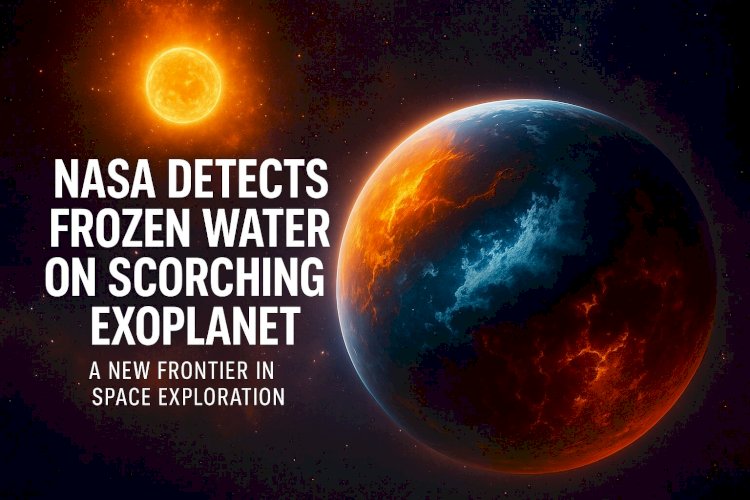NASA Uncovers Icy Water Amidst Extreme Heat on Distant Exoplanet

This news was originally published on ALAND
In a remarkable astronomical discovery, NASA scientists have detected frozen water on an exoplanet known for its blistering temperatures, challenging previous assumptions about planetary environments beyond our solar system. This finding opens new avenues in the search for water—and potentially life—on worlds once thought too hostile to support it.
The Paradox of Ice and Fire
The exoplanet, orbiting a star hundreds of light-years away, endures surface temperatures soaring far beyond those found on Earth’s hottest deserts. Despite this intense heat, data gathered from space telescopes reveal signatures of icy water in the planet’s atmosphere and possibly on its surface. This intriguing coexistence of extreme heat and frozen water has puzzled scientists and sparked fresh investigations into atmospheric dynamics and planetary formation.
How the Discovery Was Made
Using advanced spectrometry instruments aboard NASA’s latest space observatories, researchers analyzed the exoplanet’s light spectrum to identify the chemical fingerprints of water molecules. The data suggest pockets of frozen water vapor exist in the planet’s upper atmosphere, shielded by unique atmospheric conditions that prevent immediate evaporation.
Implications for Exoplanetary Science
This discovery challenges the conventional wisdom that exoplanets with scorching temperatures are entirely inhospitable to water. It highlights the complexity of planetary atmospheres and suggests that water may be more common—and diverse—in the universe than previously believed. Such insights are crucial as scientists refine criteria for habitability in the ongoing quest to find life beyond Earth.
Looking Ahead
NASA plans further observations of this and similar exoplanets to better understand how water behaves in extreme environments. These studies will deepen our knowledge of planetary science and help guide future missions aimed at detecting biosignatures on distant worlds.

 content-team
content-team 


















